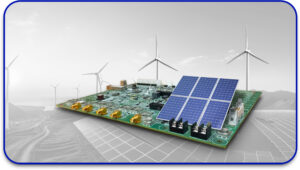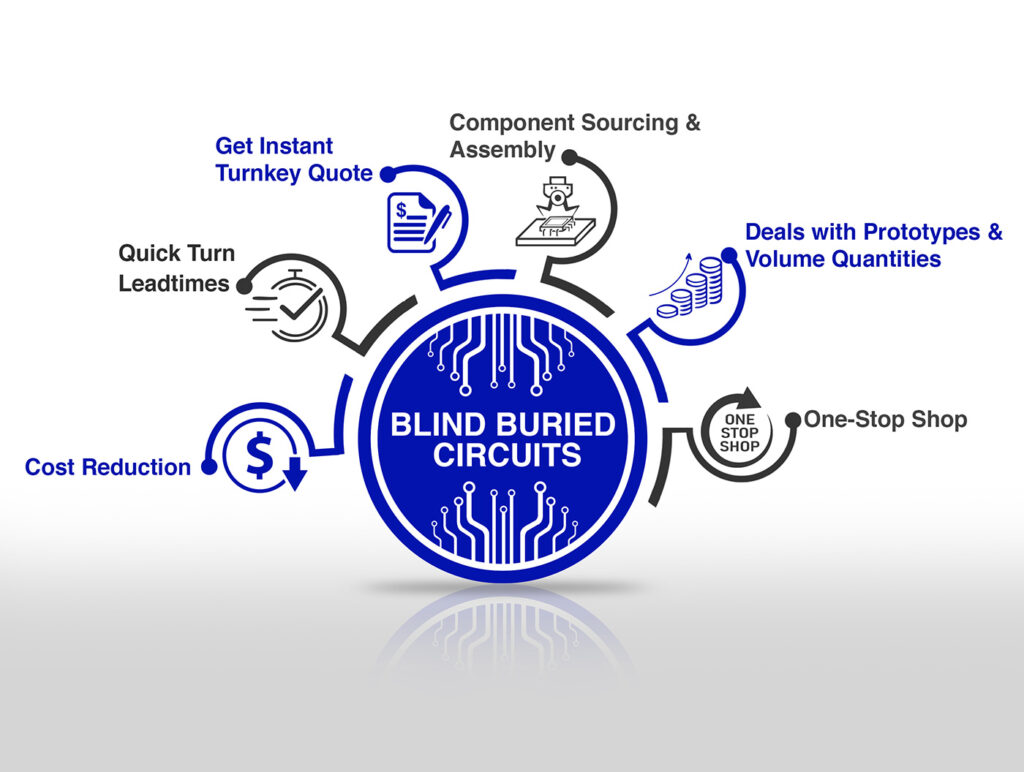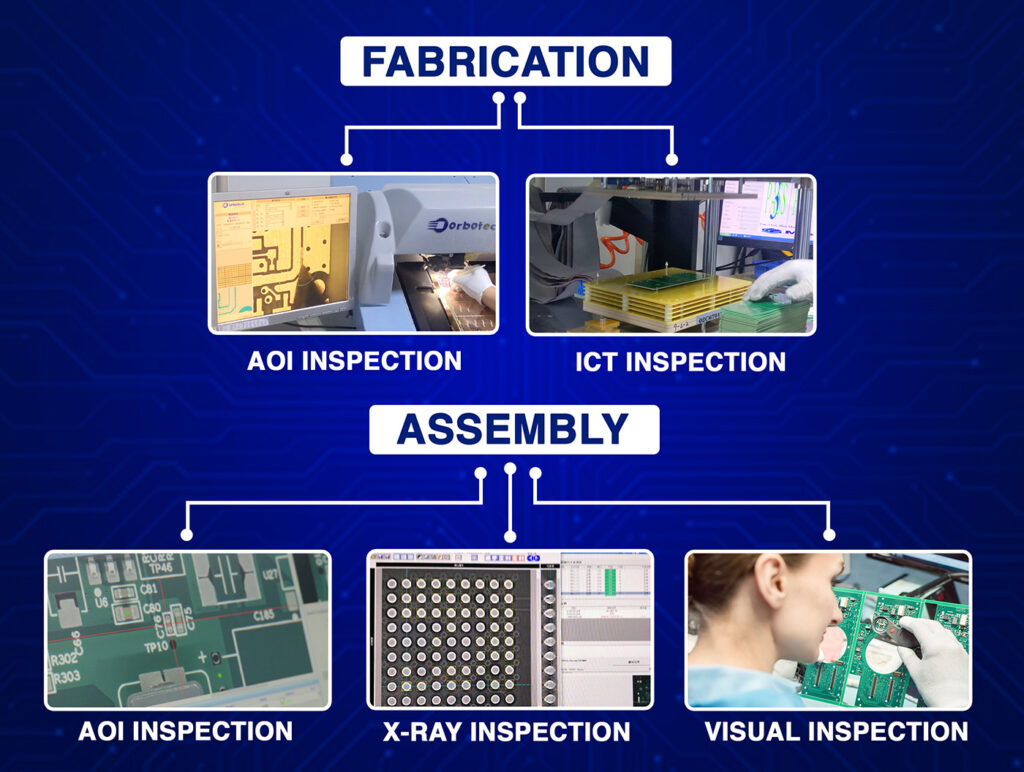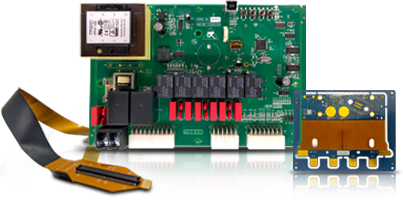PCBs serve as the foundation for most electronics today. Each component has to be kept in place and connected to the rest. This is done through the use of a PCB for that electronic device. Renewables, like solar and wind power, have had PCBs integrated into them in order to improve the efficiency of their energy systems and processes.
As an example, a PCB controls electric systems, manages them, or even monitors them. The assembly and manufacturing of PCBs have become essential to the functioning of electric systems and the storage of renewable wind, solar, and hydropower energy. These technologies require a Solar Panel PCB, Wind Turbine PCB, or EV PCB to maximize their efficiency.
PCBs in The Industry Of Energy
In the energy sector, an example of PCBs in action is the Printed Analytics system. Google uses it to monitor how many times specific devices have been powered on or off. Gas & Power has developed its own dashboards where its clients can visualize the energy lower or increase in powering up different devices. All these clients can utilize such dashboards for analysis of data at any point so they can analyze results in real time. Having this technology readily available aids in the decision-making processes, making them incredibly effective.
Renewable energy systems do rely on these power systems and technologies and having data ready in real time helps them make better informed decisions as quickly as possible. Utilizing data this way accelerates the decisions that are made upon usage of renewable energy systems and technology.

Use of PCBs in Renewable Energy Sectors
The renewable energy sector has significantly advanced in the recent past, and both together in one sentence can give the impression that PCBs have had an impact. Let’s see how renewable energy PCBs are incorporated into different forms of renewable energy.
1. Solar Power Systems
In the case of solar power systems Custom PCB design involves the creation of control boards that oversee battery charging and power distribution management. PCBs perform essential tasks like voltage regulation and thermal management within solar inverters, which are crucial for converting the direct current (DC) electric power produced by solar panels into alternating current (AC) electricity) that can be used. Ensuring the efficiency and longevity of these systems greatly depends on high-quality PCBs.
2. Wind Turbines
Wind turbines use Energy PCB applications to supervise the function of the mechanical and electrical systems in charge of keeping the turbine operational. These PCBs are applied in conjunction with other devices that track wind speed, direction and turbine performance for ensuring that optimal performance is accomplished. Additionally, these PCBs form the heart of power systems that transform the mechanical energy derived from the rotation of the turbine blades into electric energy.
3. Energy Storage Systems
Batteries and other energy storage systems are essential to the renewable energy sector. The assembly and manufacture of PCBs are required to create the power management systems of the energy storage devices. Charge and discharge control PCBs integrated within batteries manage the current pathways and monitor, control, and maintain the charge of the battery to keep it operable and usable. The efficiency of energy storage systems would diminish significantly if reliable PCBs were not incorporated, and this would threaten the stability of energy supply systems.
4. Electric Vehicles (EVs)
The shift to clean energy alternatives has profoundly impacted the electric vehicle (EV) industry, resulting in its rapid growth. A variety of operations in EVs are provided by PCBs, including battery management for the power supply and control of electric motors. Power management functions of PCBs in EVs encompass BMS, charging units, and even regenerative braking. Advances in electric vehicles will continue to provide new clean energy alternatives, enhancing the efficiency of traditional energy-consuming vehicles.
5. Smart Grid Technologies
Smart grids use different forms of technology to streamline electricity monitoring and distribution. Custom PCB manufacturing helps in the creation of monitoring systems, which aid in the management of power generation, distribution, and consumption by the utilities. With the use of PCBs in intelligent grid devices, energy providers are able to optimize their systems, thereby reducing waste and increasing energy efficiency.
Why PCBs Are Critical for Energy Applications ?
In the energy sector, PCBs have numerous vital roles. Signal processing, power conversion, thermal management, and energy regulation are some of their key functions. For renewable energy sources to be sustainable, the systems that capture and store them must be efficient and dependable.
1. Durability
The energy systems, particularly those based on renewable sources like wind and solar, face extreme environmental conditions. The printed circuit boards or PCBs incorporated in these systems need to be durable enough to endure harsh environments like high temperatures, humidity, and even violent vibrations. High-quality PCBs are essential for ensuring sustained and reliable performance under these demanding conditions.
2. Efficiency
Like many other industries, the energy sector heavily relies on efficiency. Renewable energy systems are expected to convert, store, and distribute renewable power with minimal loss of energy. PCBs are manufactured to control power reasonably and make sure that energy transfer within the system is seamless. PCBs serve to maximize the amount of solar energy converted into electrical energy in solar panels. PCBs also work in wind turbines and electric vehicles, where they make sure that energy expenditure is efficient, minimizing wastage.
3. Thermal Management
A variety of energy systems will generate heat, which may damage delicate components. In the case of overheating, losing energy can significantly hinder a system’s performance, which makes its effective management critical. Applications of energy PCBs come with known features built to reduce overheating and these include thermal vias as well as heat sinks. These are critical for the safe and effective operation of renewable energy devices. Effective thermal management is necessary to ensure the safe and efficient operation of renewable energy devices.
4. Miniaturization and Integration
Integration refers to the embedding of multiple features into the smallest size of a system possible. With the development of new technology, more advanced energy systems require diminutive integrated parts. Changes in technology and advancement of integration require further development of Electric Vehicles (EVs), making custom PCBs easier to manufacture. Other examples include solar energy inverters and compact PCB designs which offer extensible flexibility as well as optimization of space.
Challenges in PCB Manufacturing for Energy Applications
While USA based PCB production has successfully integrated many of the features that the energy industry needs, there are still shortcomings to be addressed. One of the primary concerns is the ability of the energy PCB applications to endure harsh operating conditions. In applications like solar panels and wind turbines, the vibrational and thermal stresses are excessively high and require the PCBs to be precisely tailored in their design and construction.
Another issue is cost. The urgent need for renewable energy systems makes the availability of economical PCBs even more critical. It is an excellent challenge for the manufacturers to ensure that the printed circuit boards maintain the rigid reliability benchmarks set for energy applications and still keep the costs reasonable.
Looking Ahead: The Future of PCBs in the Energy Industry
As the focus of the globe shifts more towards renewable energy sources, the requirement for more reliable and efficient power systems will increase. This will further drive the Custom PCB design and fabrications tailored for energy functionalities components to advance in design sophistication, thermal management, and durability.
Moreover, with the advancement of microelectronic systems on chip (energy PCB) applications, the development of materials and designs will additionally enhance the performance of renewable energy technologies. Flexible PCBs and high-performing laminates may soon become standard materials in energy applications, which will further improve the efficiency of these systems.
Conclusion
To summarize, the renewable energy sector relies heavily on PCB manufacturing and assembly systems. They are integrated within modern energy systems such as solar power, wind turbines, energy storage systems, and electric vehicles. PCBs are essential components for these devices. Innovative approaches to energy PCBs and energy-efficient PCBs will be increasingly important as the world shifts towards sustainable and more eco-friendly energy alternatives, helping ensure that renewable energy is the primary energy source in the future.
Consider that you are searching for a PCB manufacturer or researching Custom PCB manufacturing for energy applications. In each of these cases, it is critical to choose a partner who understands the unique complexities of such systems. Having the right partner for PCB production USA, such as Blind Buried Circuits, ensures that your energy systems perform optimally and lead in the marketplace.





